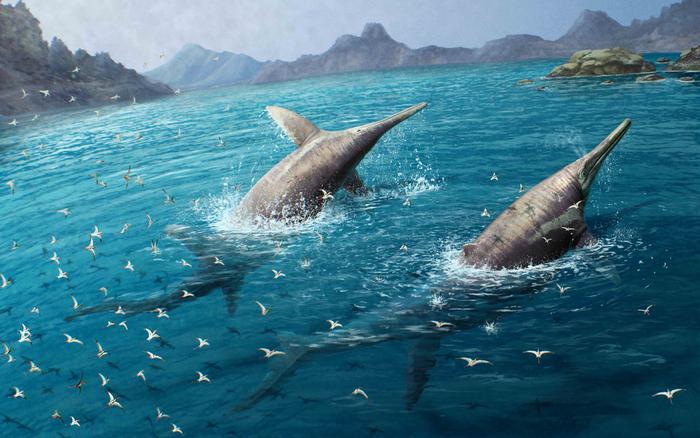A father and daughter from Devon, UK, have discovered the fossilized remains of a gigantic jawbone measuring over two meters long on a beach in Somerset. Justin and Ruby Reynolds found the first pieces of the jawbone in May 2020 while searching for fossils at Blue Anchor beach. Ruby, then 11 years old, found the first chunk of the bone before they searched together for additional pieces.
Experts Identify New Species of Ichthyosaur
The bones have been identified as belonging to the jaws of a new species of enormous ichthyosaur, a type of prehistoric marine reptile. Estimates suggest the oceanic titan would have been more than 25 meters long. The Reynolds contacted leading ichthyosaur expert Dr. Dean Lomax, a palaeontologist at The University of Manchester, who confirmed the significance of the find.
Second Giant Jawbone Discovered
This is the second giant ichthyosaur jawbone to be found in the area. In May 2016, seasoned fossil collector Paul de la Salle discovered the first giant jawbone further along the coast at Lilstock. Dr. Lomax and his team studied and described the first jawbone in 2018 and had hoped that another would be found.
Team Effort to Recover Rare Discovery
Justin and Ruby, along with Paul, Dr. Lomax, and several family members, visited the site to hunt for more pieces of this rare discovery. Over time, the team found additional pieces of the same jaw that fit together perfectly, like a multimillion-year-old jigsaw. The last piece of bone was recovered in October 2022.
New Species Named Ichthyotitan severnensis
The research team, led by Dr. Lomax, revealed that the jaw bones belong to a new species of giant ichthyosaur, which they have named Ichthyotitan severnensis, meaning “giant fish lizard of the Severn.” The bones are around 202 million years old, dating to the end of the Triassic Period.
Young Scientist Makes Her Mark
Ruby, now 15 years old, is a published scientist who not only found but also helped to name a type of gigantic prehistoric reptile. “It was so cool to discover part of this gigantic ichthyosaur. I am very proud to have played a part in a scientific discovery like this,” she said.
Bones Provide Insight into Ichthyosaur Development
Further examinations of the bones’ internal structures, carried out by Marcello Perillo from the University of Bonn, Germany, confirmed the ichthyosaur origin of the bones and revealed that the animal was still growing at the time of death. The unique histological characters of the bones hint at yet-to-be-understood bone developmental strategies that allowed late Triassic ichthyosaurs to reach enormous sizes.
Discoveries to Go on Display
Ruby, Justin, and Paul’s discoveries will soon go on display at the Bristol Museum and Art Gallery. Dr. Lomax said, “This research has been ongoing for almost eight years. It is quite remarkable to think that gigantic, blue whale-sized ichthyosaurs were swimming in the oceans around what was the UK during the Triassic Period. These jawbones provide tantalising evidence that perhaps one day a complete skull or skeleton of one of these giants might be found. You never know.”

